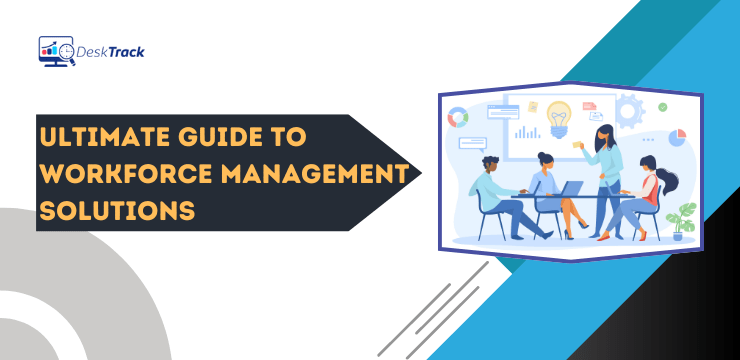In 2025, workforce management software has experienced a transformative evolution ignited by advancements in artificial intelligence (AI) and automation technologies. These innovations have reshaped how organizations optimize employee scheduling, attendance tracking, labor compliance, and productivity analytics. The integration of AI and automation into workforce management tools is no longer just a trend but a necessity for businesses aiming to thrive in an increasingly competitive and dynamic work environment.
Understanding Workforce Management Software
Workforce management (WFM) software refers to a suite of tools and systems used by organizations to effectively manage their human resources. Traditionally, these platforms encompassed scheduling, time and attendance tracking, leave management, and payroll integration. However, with growing complexities such as remote work, flexible hours, and global teams, the capabilities of WFM software have significantly expanded.
How AI is Transforming Workforce Management
AI, at its core, enables machines to simulate human intelligence by learning from data and making decisions or predictions. Within workforce management, AI empowers systems to go beyond standardized rule-based processes, introducing personalization, predictive insights, and autonomous decision-making.
Key AI-driven advancements in WFM software include:
-
Intelligent Scheduling: AI algorithms analyze variables like employee skills, preferences, availability, labor laws, and demand forecasts to create optimized schedules. These schedules balance operational needs with employee satisfaction, reducing overtime costs and turnover. Machine learning models continuously improve scheduling accuracy by learning from historical data.
-
Predictive Analytics: AI predicts future workforce needs based on business trends, seasonality, and external factors. Employers can proactively adjust staffing levels and plan recruitment cycles more efficiently.
-
Automated Compliance Monitoring: AI monitors labor laws and regulations in real-time, identifying potential violations such as overtime limits, mandatory breaks, and contract rules. Automated alerts help employers avoid costly legal penalties.
-
Smart Attendance Tracking: Face recognition and biometric AI systems automate attendance with enhanced accuracy and reduced fraud risk. These systems can detect anomalies, such as unusual punch times, and trigger investigations.
-
Employee Sentiment Analysis: Some platforms analyze communication patterns, feedback, and engagement data using natural language processing to gauge workforce morale and predict burnout risks, enabling timely interventions.
Impact of Automation on Workforce Management
Automation complements AI by executing repetitive and rule-based tasks more efficiently, minimizing manual errors, and freeing HR personnel for strategic work. It accelerates workflows and ensures data accuracy across the employee lifecycle.
Examples of automation in workforce management include:
-
Automatic Time Tracking: Devices and software automatically capture work hours through biometric logins, geofencing, or app usage, eliminating manual data entry.
-
Self-Service Portals: Employees can request shifts, log hours, and apply for leave through intuitive, automated platforms, reducing administrative bottlenecks.
-
Payroll Integration: Automated attendance and work hour data feed directly into payroll systems, ensuring timely and precise salary calculation.
-
Task Delegation: Automated workflows assign tasks like shift swapping, approval or leave validation to appropriate managers based on predefined rules.
-
Reporting and Insights: Scheduled automated reports provide managers with real-time dashboards covering productivity, attendance trends, and compliance status.
Benefits of AI and Automation in Workforce Management Software
The fusion of AI and automation delivers measurable benefits to both employers and employees:
-
Increased Operational Efficiency: Automated scheduling and attendance reduce administrative overhead, saving time and costs.
-
Improved Accuracy: Reduced manual processes minimize errors in tracking hours, payroll, and compliance adherence.
-
Enhanced Employee Experience: Personalization and self-service features improve job satisfaction and engagement.
-
Proactive Decision-Making: Predictive analytics allow better workforce planning and risk mitigation.
-
Legal and Regulatory Compliance: Real-time monitoring prevents costly violations and supports audit readiness.
Challenges and Considerations
Despite the advantages, organizations must navigate challenges associated with AI and automation adoption:
-
Privacy Concerns: Biometric and AI-driven monitoring raise ethical questions around employee privacy and data security.
-
Integration Complexity: Combining new AI tools with legacy HR systems can require significant IT investment and planning.
-
Change Management: Employees and managers must be trained and supported to embrace new technologies without resistance.
-
Algorithm Bias: Ensuring AI models are free from bias based on gender, ethnicity, or other factors is critical to fair workforce practices.
The Future of AI-Driven Workforce Management
Looking ahead, workforce management software will continue to deepen its AI and automation capabilities:
-
Greater Use of Virtual Assistants: Voice-controlled AI assistants will handle routine HR inquiries and tasks, providing faster service.
-
Behavioral Analytics: More sophisticated AI models will incorporate behavioral and emotional data to optimize workforce wellbeing and performance.
-
Hybrid Work Optimization: Advanced AI will dynamically adjust schedules and workflows for hybrid and global teams based on real-time work patterns.
-
Augmented Decision Support: AI will augment human resource managers by providing scenario simulations and recommendations for complex workforce challenges.
Conclusion
The rise of AI and automation in workforce management software marks a paradigm shift in how organizations manage their most vital asset — their people. By integrating intelligent algorithms and automated workflows, businesses can achieve unprecedented efficiency, compliance, and employee satisfaction.
However, success in this new landscape requires thoughtful adoption, focusing on ethical considerations and user empowerment. As workforce dynamics evolve, AI-powered management systems will be indispensable tools for navigating the future of work.


